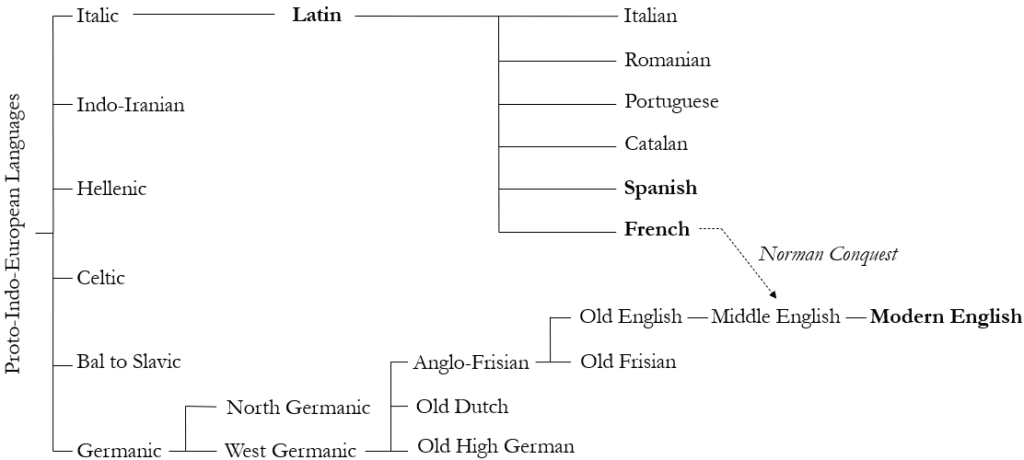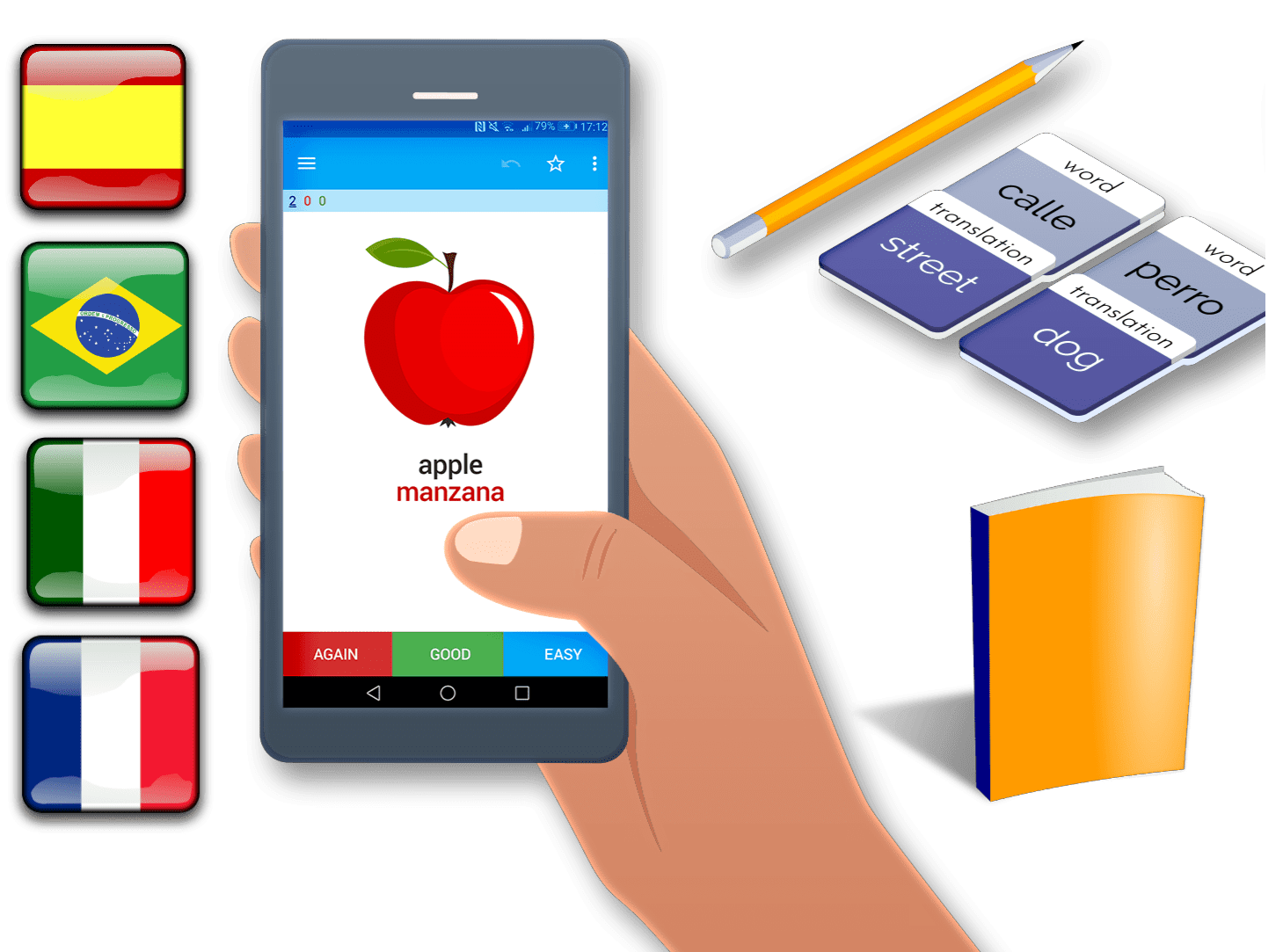In this article, we discuss Romance languages. We answer questions like: What are the Romance languages? Why are they called Romance languages? How many Romance languages are there? Is English a Romance language? And many other questions.
Introduction to the Romance Language: Romance Language Definition
The Romance languages, sometimes known as Latin or Neo-Latin, are a group of contemporary languages that emerged from Late Latin-based languages and their spoken form, Vulgar Latin. They are the sole subgroup of the Indo-European language family’s Italic languages branch. It is estimated that there are 489 million native speakers of Spanish (489 million Portuguese), 8 million native speakers of French (80 million), 67 million native speakers of Italian, and 24 million native speakers of Romanian. These are all national languages of their respective nations of origin.
About 900 million people speak Romance languages natively worldwide, mainly in the Americas and Europe. The major Romance languages have many non-native speakers and are widely spoken. Romance languages are a group of closely related languages derived from Vulgar Latin, the vernacular Latin of the Roman people. The Romance languages are derived from the Latin language. The Indo-European family of languages includes these languages.
Because Romance languages are spoken as second languages in many countries (for example, French in Morocco or Algeria) or are spoken by pockets across the world, it is hard to get exact figures.

How many Romance languages are there?
Aside from the eight languages mentioned above. Several other languages might also qualify, depending on how we define a language. This can be a slippery question, both from a linguistic and political standpoint:
- The Sicilians
- The Corsican
- A group of Rhaeto-Romance languages is spoken in southeast Switzerland and northern Italy.
- Italian and Franco-Provençal dialects
- Walloon, a French dialect spoken in Belgium
- The Piedmontese language is spoken in northwest Italy
- The Asturian language is spoken in the northern part of Spain
- The Galician language is spoken in the northwest of Spain
- The Haitian Creole language and other Creole languages
- A late 19th-century Croatian language once spoken by Tuone Udaina, but now extinct.
The list is not exhaustive in any way. There is no universally accepted definition of what constitutes a language (versus a dialect, basilect, or other language variant) in the first place. In addition, there is no clear threshold for how much Latin influences a language as a Romance language.
Despite this, Spanish, French, Portuguese, Italian, and Romanian, share a common vocabulary and grammar that are heavily Latinated, making them remarkably understandable to each other.
Why are they Called Romance Languages?
Romance languages are so named because of their derivation from the Roman Empire’s Latin. As the empire expanded, Latin became the lingua franca across its territories. With time, the ancient language evolved into various modern-day languages we now identify as the Romance languages.
Spanish Language: A Widely Spoken Romance Language
Spanish, also called Castilian, is the most spoken Romance language globally. Boasting over 460 million native speakers, its influence is seen from the cobbled streets of Spain to the vast terrains of Latin America and even as far as Equatorial Guinea in Africa. This linguistic prominence has roots in Spain’s historical colonization efforts. These historical events facilitated the spread and adoption of the language in many parts of the world. It’s the predominant language in countries like Mexico, Colombia, Argentina, Peru, etc. The variations in regional dialects and vocabulary are immense, reflecting Spanish-speaking regions’ diverse cultures and histories.
Portuguese: More than Just Brazil and Portugal
Portuguese, with its mellifluous tones and rich history, stands proudly as the official language of both Brazil and Portugal. Surpassing 250 million speakers, it is the Romance language family’s second heavyweight. The linguistic variances between Brazilian and European Portuguese can be likened to the differences between American and British English. This includes distinctions in pronunciation, vocabulary, and sometimes grammar. Additionally, Portuguese is spoken in African countries, such as Angola, Mozambique, Cape Verde, and Guinea-Bissau.
Romanian: The Eastern Romance Language
Romanian, or Română, offers a unique tapestry within the Romance language group. With its placement as the third most spoken Romance language in Europe, Romanian showcases a blend of Latin roots with Slavic influences due to its geographical position. Romanian has preserved certain linguistic features from Latin, unlike its Western Romance cousins, such as the case system for nouns. While its primary territory is Romania, it’s also the official language of Moldova (referred to as Moldovan in that context).
Other Popular Romance Languages
- French (Français): A language of diplomacy, culture, and art, French is the lingua franca of over 275 million people worldwide. While its heart remains in France, its voice resonates in parts of Canada (primarily Quebec), numerous African countries, and parts of the Caribbean and Southeast Asia.
- Italian (Italiano): A language synonymous with culture, fashion, and cuisine, Italian is primarily spoken by the 60 million inhabitants of Italy. It also has a presence in parts of Switzerland, Croatia, and Slovenia.
- Catalan: With its distinct identity, this language thrives in Catalonia and the Balearic Islands in Spain. It’s also spoken in the Valencian Community (where it’s referred to as Valencian), the eastern part of Aragon, the Roussillon region in France, and Andorra. With over 9 million speakers, Catalan continues to be a testament to the region’s vibrant history and culture.
Is Latin a Romance language?
Latin is not a Romance language, but it is the language from which the Romance languages evolved, as it is the language of origin. It is believed that Latin was the language of the Roman Empire and was spoken throughout Europe at the time Romance languages evolved from the spoken form of Latin, known as Vulgar Latin, which soldiers, settlers, and merchants of the Roman Empire spoke.
Is English a Romance language?
English is not a Romance language. The Germanic language originated from the Anglo-Saxon language, spoken by the Germanic tribes that invaded Britain in the fifth and sixth centuries and formed a part of the English language. The Norman Conquest of England in 1066, however, is believed to have led to many words in English being borrowed from Romance languages, primarily French.
Is Spanish a Romance language?
Spanish is indeed a Romance language. Italian, French, Portuguese, and Romanian are also part of the Romance language family, as it is part of the Romance language family. It is believed that the Spanish language evolved from several dialects of Vulgar Latin, which separated from the Western Romance languages during the period from the 5th to the 8th centuries.
Is Romanian a Romance language?
The Romanian language is a Romance language. It is a member of the Eastern Romance sub-branch of Romance languages that developed from a variety of dialects of Vulgar Latin that separated from Western Romance languages from the 5th to the 8th centuries. Romanian is the only Romance language spoken in Eastern Europe.
Why is Romanian a Romance language?
Romanian is a Romance language because it evolved from several dialects of Vulgar Latin that separated from the Western Romance languages in the period from the 5th to the 8th centuries. However, Romanian has many unique qualities that make it different from other Romance languages.
For example, Romanian has many borrowings from Hungarian and Slavic languages, and its grammar differs from other Romance languages regarding the placement of definite articles. Despite these differences, Romanian is still a Romance language, with most of its vocabulary being Latin-derived.
From Classical Latin to Vulgar Latin: The Beginning
Romance languages owe their genesis to Vulgar Latin, a vernacular type of Latin, as opposed to the Classical Latin of literary and official documents. As the Roman Empire expanded, so did the spread of Latin. However, with the empire’s decline, isolated Latin dialects began to diverge, forming the basis for the modern Romance languages.
Impact of Other Languages on the Evolution of Romance Languages
The development of Romance languages was also influenced by other existing languages in the regions where Latin spread. For instance, Latin interacted with Celtic languages in what is now France, while in the Iberian Peninsula, it came into contact with Iberian and later Arabic.
Language Learning: Delving into the Romantic Languages
For many, the allure of Romance languages lies in their rich history and reputation as the “languages of love.” Among the Romance languages, Spanish, Portuguese, and French are top choices for language learning. This is often due to their widespread use and cultural influence.
One of the easiest ways to learn new vocabulary is through Anki cards which use the spaced-repetition technique. Check out a range of Anki Flashcards to learn Spanish, Portuguese, Italian, and French.
The Future of Romance Languages
With globalization and the importance of multilingualism on the rise, Romance languages continue to be learned and spoken by millions worldwide. These languages’ rich history, widespread usage, and cultural significance ensure their prominence in the future of language and communication. The importance of language cannot be overstated at an age when the globe is more interconnected than ever. With their large number of native speakers and cultural impact, the Romance languages hold steady in the face of an ever-changing linguistic landscape.
Their rich historical, literary, artistic, and worldwide communication origins make them indispensable. Furthermore, with the growth of internet platforms and language learning apps, access to these languages has grown significantly. As global trade, tourism, and diplomacy continue to develop, knowledge of Romance languages can provide a competitive advantage in a variety of industries. Furthermore, Romance language-speaking nations’ cultural exports—whether Spanish movies, French fashion, Italian cuisine, or Brazilian music—ensure these languages stay at the forefront of global consciousness.
Conclusion
In conclusion, the Romance languages are a testament to the fluidity and adaptability of linguistic evolution. These languages have metamorphosed and branched out over countless centuries, forming some of the globe’s most widely spoken and impactful tongues. Each of these languages carries echoes of its Latin heritage, manifesting in shared vocabulary, grammatical structures, and phonetic similarities.
Their deep-rooted influence is not just evident in the realms of everyday communication but also permeates art, literature, music, and science. Today, in an age of interconnectivity and globalization, the ability to communicate in Romance languages has proven invaluable in diplomacy, business, and social interactions. Furthermore, their role in global culture has shaped and enriched our collective human experience. Preserving and understanding these linguistic gems is not just about recognizing their past significance. It is about acknowledging their current relevance and ensuring their future.
It is about embracing the shared history and experiences of millions. The thread of Romance languages weaves a rich, intricate pattern of connections across continents, cultures, and epochs, making diving into the world of these languages a journey of discovery—a pathway to understanding shared heritages, celebrating differences, and fostering connections that transcend geographical and temporal boundaries.


